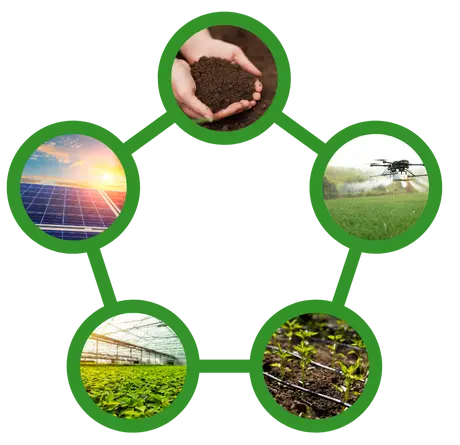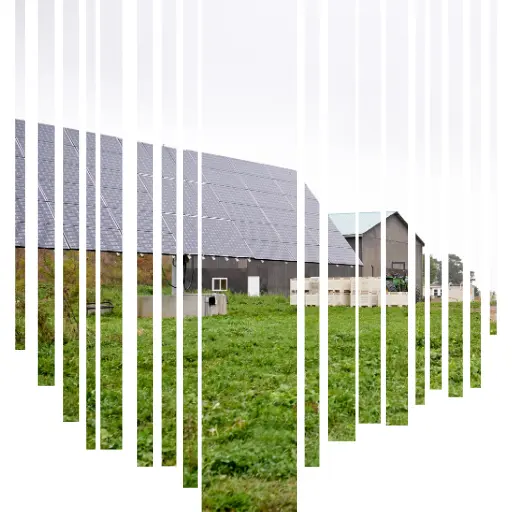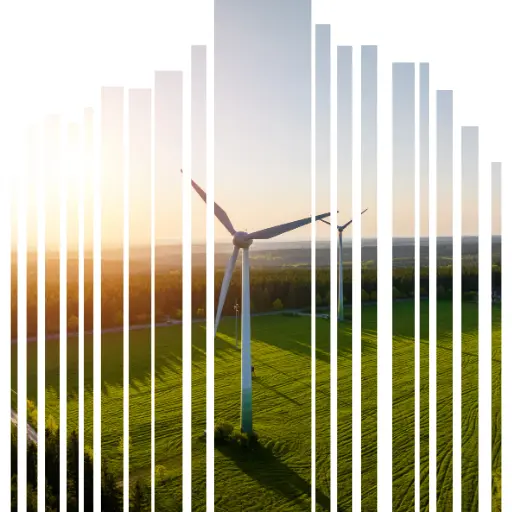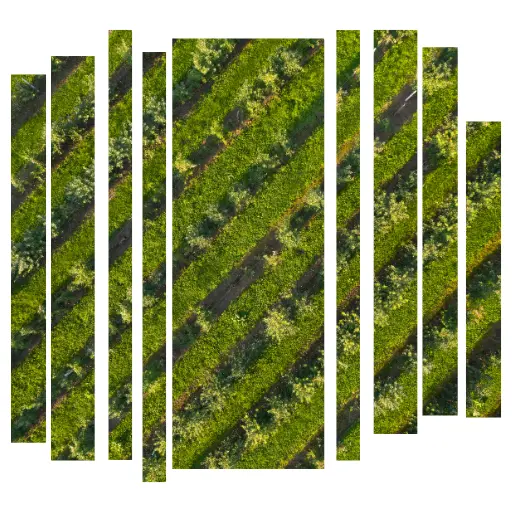
In most global emission accounting, the horticulture industry is grouped together with animal agriculture, forestry and large-scale animal feed and bio-fuel production. The agriculture/forestry sector makes up between 20% to 25% of all global emissions. The majority of these emissions however are from the beef/dairy industry, and soy, palm oil and timber production. Comparatively, fruit and vegetable production has a much lower emission rate, and some research has shown that there is great potential for carbon capture and sequestration to balance the emissions produced through fruit and vegetable growing. In this article, we start to unravel some of the complicated processes of carbon reporting for the horticulture industry.
While researching carbon emission reporting, we found a dizzying array of acronyms, organizations and regulations to learn. With climate change acceleration and the deadline to lower global emissions before critical temperature rise fast approaching, more pressure is coming for all industries to account for emissions and to make meaningful reduction goals. The horticulture industry is uniquely positioned to help curb emissions through soil and plant sequestration. Below we will explore some key definitions to help understand carbon reporting and the landscape of reporting demands; programs and tools for carbon reporting most relevant for horticulture; and we will start to discuss the steps for carbon accounting in the fruit and vegetable industry.
Key Carbon Reporting Terms Defined:
Green House Gases (GHGs):
The gases released into the atmosphere that have been identified as the largest contributors to climate change. The GHGs most prevalent in agriculture are carbon dioxide (CO₂), methane (CH₄), nitrous oxide (N₂O), with some amount of emissions coming from fluorocarbons due to refrigeration and cooling processes.
Carbon Emissions:
The amount of GHG released into the atmosphere represented as the equivalent of carbon dioxide. In horticulture, the primary sources of emissions are land use changes (e.g. deforestation), fuel use and fertilization.
Carbon Equivalent (CO₂e):
The conversion of other GHG to carbon dioxide in order to create a common scale and understanding of the harm done through all GHG emissions. For example, 1kg of methane equals 25kgs of carbon dioxide and 1kg of nitrous oxide emissions is equivalent to 298kg of carbon dioxide.
Carbon Capture and Sequestration (CCS):
The process of extracting (capture) CO₂e from the atmosphere and holding (sequestration) CO₂e in the ground or plant life so it's not released into the atmosphere contributes to GHG emissions and climate change. There is more research being done currently into the field of ‘terrestrial carbon removal and sequestration’ through soil and plant life that is essential for being able to accurately calculate the total carbon impact of horticultural practices.
Carbon Sink:
A natural environment or natural or manmade process that contributes to carbon capture. It absorbs more carbon than it produces. Most often this refers to an undisturbed natural environment, like a wetland or forest. Ensuring areas capable of carbon capture are not destroyed and are expanding is a vital step towards mitigating climate change.
Carbon Calculation:
A method used to calculate the total amount of carbon dioxide and carbon equivalent GHG gases released into the atmosphere by a given entity, (e.g. a business, city, country etc.). It involves taking into account all direct (e.g. fuel use), indirect emission sources (e.g. electricity use) and any carbon capture and sequestration that would offset some emissions.
Carbon Neutral:
When an entity (business, organization, city, country etc.) absorbs GHG emissions at the same rate or faster than it releases them. Often referred to as Net-Zero emissions. There are many carbon neutral certification agencies and most reputable certifiers will follow internationally recognized methods for analysis and reporting like the GHG Protocol.
Carbon Market / Carbon Trading:
A system where an entity (business, organization, city, country etc.) can buy or sell emission allowances to offset their own or other entities’ emissions. Typically, access to carbon trading markets involves rigorous emission reporting and verification by a third party using standard measurement and reporting processes like the ISSB set by the IFRS.

International Emission Reporting Organizations and Standards
When embarking on the process of emission reporting, it is important to use internationally recognized standards. Most mandatory and voluntary reporting programs will rely on these standards and international reporting organizations. Using the reporting frameworks highlighted below will allow for generating carbon emission data that will be compatible for most reporting programs.
GHG Protocol
The Greenhouse Gas Protocol (GHG Protocol) was established in 1998 as a standardized way to account for and measure greenhouse gas emissions. Its first set of standards was released in 2001 and has been updated in 2004. It remains the international standard measurement system for emission to this day and is the backbone of many emission reporting programs.
SBTi
Science Based Targets initiative (SBTi) is a corporate climate action organization that works to enable companies to set emission reduction targets in line with the changes needed to avoid catastrophic global warming and ultimately reach net zero emissions by 2050.
IFRS & ISSB
International Financial Reporting Standards Foundation (IFRS) is a global not for profit that sets corporate reporting standards including climate change risk assessments and emission reporting. They developed the International Sustainability Standards Board (ISSB) in 2021 to help “address a fragmented landscape of voluntary, sustainability-related standards and requirements that add cost, complexity and risk to both companies and investors”. Reporting using the ISSB set standards is a prerequisite for gaining access to international carbon trading markets and ensures a reporting standard that is recognized by global investors. ISSB standards include the IFRS S1 and IFRS S2 which incorporate the methods for corporate emission calculations outlined in the GHG Protocol.
Emission Reporting Demands on the Agriculture Industry

Since the inception of the Green House Gas protocol in 2001, mandatory emission reporting has been expanding in scope. All G20 countries have some level of mandatory reporting demands. Reporting demands vary by country based on company size, emissions above a given threshold or operating in specific sectors. Some Countries also have voluntary reporting programs for smaller organizations to help meet international emission reduction goals.
Canada, for example, mandates that companies in certain sectors and/or who have emissions greater than 10,000 tonnes CO₂e must report emissions annually. Canada also has a voluntary emission reporting program for businesses of any size and sector called The Net Zero Challenge. While it is unlikely that most farms or regional horticultural product producers will meet the emission thresholds for mandatory reporting in Canada, voluntary reporting may enable greater access to grants and marketing opportunities.
Increasingly small and medium sized businesses (SMEs) are being encouraged to enroll in voluntary emission reporting. Such programs can help gain access to government and non-profit grants, improve market access with large retailers and export markets and for marketing and customer trust benefits. For example, Walmart is encouraging their suppliers to report on their emissions and emission reduction goals through their Project Gigaton program. Walmart suppliers enrolled in the program are required to provide their scope 1 and 2 emissions (as defined by the GHG Protocol), to categorize their scope 3 emissions and to make and report on the progress of meaningful emission reduction goals.
The Project Gigaton program rewards suppliers with sustainability badges for marketing and product promotion when they are able to demonstrate sustainability goals being met. Walmart’s emission reporting standard uses the GHG Protocol and suppliers must set meaningful emission reduction targets using Science Based Target Initiative (SBTi) standards. While this is not a mandatory program to be a supplier to Walmart, enrolled suppliers may have preference over suppliers who choose to not report emissions. Given the political landscape in the USA, it seems likely that more private sector responses to tackling climate change will be favoured in place of more governmental regulations. Enrolling in retailer reporting programs like this may become increasingly important for growers and packers to be able to maintain market access.

Getting Started with Emission Calculations in Horticulture
In this section we will explore the first steps for carbon emission calculations in horticulture and some tools and procedures to help.

Reporting Scope and Boundary Setting
The first step for emission calculation in any organization is to determine what needs to be reported on. Where are the limits of carbon emissions your farm or pack house are responsible for calculating. The GHG protocol’s first steps provide guidance for how to tackle this problem using Organization and Operational level boundaries. Organization boundaries as defined by the GHG protocol, determine which emission sources an organization must account for.
Organization boundaries
Organization boundaries fall under two categories, Equity Share approach or Control approach. With an Equity Share approach emissions are allocated based on the organization’s economic interest or ownership percentage in an operation. For example, if an organization owns 60% of a jointly held company, they would only report on 60% of the emissions created by the company’s processes. Under a Control approach, the organization accounts for 100% of the emissions from operations over which it has control. For example, if the organization has the controlling share of financial decision making and/or operational control over the company’s business practices, they would report on all emissions even though they do not own 100% of the company.
Organizations select a boundary method based on their operational structure, reporting objectives, and the needs of their stakeholders. Defining emissions by the company responsible for producing them, rather than by ownership division, provides clearer insights into emission sources and the most effective reduction strategies. Additionally, calculating total company emissions can be a more straightforward first step, making it easier to break down emissions by equity share for more investor-focused reporting after.
However, setting these organizational boundaries can be particularly challenging in horticultural operations. Factors like leased land, third-party management, and contracted labor complicate the process. By clearly defining operational boundaries (the next step) and aligning them with both reporting program requirements and company goals, organizations can better navigate these challenges and establish more accurate emission data.
Operational boundaries
Operational boundaries is a way to determine the categories emission sources fall under for reporting purposes and to make clear the emissions the company has control over for potential reductions. Using the GHG Protocol, emissions are classified into three scopes, Scope 1, Scope 2, and Scope 3.
Scope 1 - Direct Emissions
Scope 1 covers any emissions that are generated on site by the company. For a fruit/vegetable farm or orchard, examples of scope 1 emissions include:
- fuel use for irrigation pumps or farm owned vehicles
- fertilizer use, particularly nitrogen applications
- heating buildings and greenhouses using propane or natural gas
- refrigeration leaks in cooling rooms / CA rooms
Scope 2 - Indirect Emissions of Purchased Energy Use
Scope 2 emissions are generated through the use of purchased energy that is used on your farm, in the orchard or greenhouse, at storage or the pack house. It is calculated using the total amount of energy from the grid used on site across all operations. It does not include the use of energy generated on site, like through local solar panels, or wind turbines.
Scope 3 - Indirect Emissions Upstream and Downstream
Scope 3 is perhaps the hardest to define and calculate as it includes all upstream and downstream emissions related to the operation of the company/farm. It often involves close communication with suppliers and buyers and gathering or estimating emissions from them. Some of the most common scope three emissions to consider in horticulture include:
- transportation of products to retail and employees to work, including potential long distance travel for H2A workers and local labour commuting
- transportation and manufacturing of materials used like plastic packaging and fertilizers
- waste disposal from packing materials and food waste

By understanding and defining both organizational and operational boundaries, horticultural businesses can establish a solid framework for GHG emissions reporting. This process ensures compliance with reporting standards and provides clarity about emissions sources and opportunities for reduction. While navigating challenges like leased land, third-party management, and supply chain complexities, setting clear boundaries allows organizations to identify and address their direct and indirect impacts.
Data Gathering and Organization
Once boundaries around what needs to be tracked are established, the next step to tackle is actually gathering and organizing the data needed to do emission calculations. For horticulture, this can be a daunting task involving combining information from many sources - potentially including lots of disparate paper records and bills. One of the best ways to make this process less painful is to digitize and centralize production records using a farm management software and recording processes when they happen. In general, tracking growing and production practices helps better identify processes that would benefit from more efficiency to reduce emissions. We have included a few examples specific to horticulture of information needed to start tracking emissions and how capturing this information in a digital and centralized platform can help.
Centralized chemical use, source and inventory tracking:
As one of the larger potential emission sources in horticulture, tracking fertilizer applications accurately is key to proper emission calculations. Using a spray tracking software that includes accurate spray rate, and active ingredient ratios, makes aggregating CO₂e emissions much easier. Software that supports pairing application records with spray method, equipment run times and fuel use allow for a total picture of the emissions when fertilizing. Additionally, complete farm software can track irrigation pump use including water and power sources and run times and rates. Irrigation pumps often use diesel and can be a significant source of emissions.
Material use and inventory movement tracking:
By using a farm management software that can create accurate inventory traceability records, tracking the emissions related to inventory creation, storage and movement is simplified. Farm management software can track:
- run time and fuel use based on run time of harvest equipment like tractors
- run time and fuel use of vehicles used to ship harvest inventory to storage or packing facilities
- run time and energy use of cold and C/A storage facilities
- packaging material use at harvest and during packing
- run time and energy use of pack lines and facilities
Being able to access emission related activities digitally and organize by location and date can help ensure that emissions are properly allocated along the boundaries established in the first step. Large agricultural companies can aggregate total carbon emissions across all growing locations or divide emissions amongst locations and processes to meet the reporting demands they have.

Carbon Emission Reduction, Capture, and Sequestration in Horticulture
Ultimately, emission tracking empowers farms, orchards, and packhouses to take meaningful action toward sustainability goals while meeting stakeholder expectations and reporting requirements. In addition to highlighting the most emission heavy processes to find opportunities for changes, reporting on these emissions can sometimes open grant funding to help fund changing these processes. We have outlined below 8 impactful changes that fruit and vegetable producers can make to reduce their greenhouse gas emissions.
- Switching to renewable energy sources where possible can have a large impact on emissions. Many growers are choosing to install solar panels or wind turbines to power irrigation systems as opposed to emission heavy diesel pump systems.
- In greenhouses or pack houses, choosing energy efficient LED lighting and efficient heating systems is very impactful. Consider heat pumps and solar panel use to offset energy consumption from the power grid.
- Update cooling and refrigeration systems. Older air conditioners and cooling systems leak harmful fluorocarbons at a much higher rate than new systems.
- Switch fertilizers to use organic or bio-based nitrogen sources as opposed to synthetically produced ones that generate way more emissions to produce.
- Reduce the amount of nitrogen run off and leaching through precision spraying techniques. Soil testing and aerial field monitoring can help ensure fertilizer is applied only where it is needed.
- Incorporating more crop rotation where possible can also help eliminate the need for fertilization. Planting legumes and other nitrogen fixing crops and plowing them into the soil before planting adds nitrogen to the soil.
- Reduce tiling, soil disruption and land clearing, including leaving chaff after harvest, helps maintain soil structures that hold carbon.
- Adding borders of native grasses and hedgerows with large root structures around growing areas also helps hold carbon in the ground while having the added benefit of reducing water runoff and providing more habitat to helpful pollinators.
Accounting for carbon capture and sequestration in emissions calculations is one of the most challenging aspects for fruit and vegetable growers. This complexity often leads to it being omitted from calculations altogether. Both soil and plant life naturally store carbon: plants capture CO₂ from the atmosphere and convert it into stored carbon while they are alive. For orchards, estimates of carbon storage can be made based on tree size, while soil sequestration rates can vary depending on soil type. Cooler, wetter soils tend to retain more carbon than dry, hot soils. Ongoing research aims to refine methods for assessing carbon capture and sequestration rates from plants and soil management, allowing potential horticultural carbon sinks to be more accurately accounted for in industry emissions reporting.
While the horticulture industry is often overshadowed by higher-emitting sectors like livestock and large-scale crop production, it holds significant potential to lead in sustainable practices and emissions reduction. By understanding and implementing effective carbon accounting, growers can not only meet evolving regulatory and market demands but also unlock opportunities to contribute meaningfully to climate change mitigation and potentially gain access to sell offsets on carbon trading markets. With advancements in carbon capture and sequestration research, as well as tools for accurate emissions recording and reporting, the horticulture sector is uniquely positioned to balance productivity with environmental stewardship. Through proactive measures and innovation, fruit and vegetable growers can play a pivotal role in driving agriculture toward a more sustainable future.


